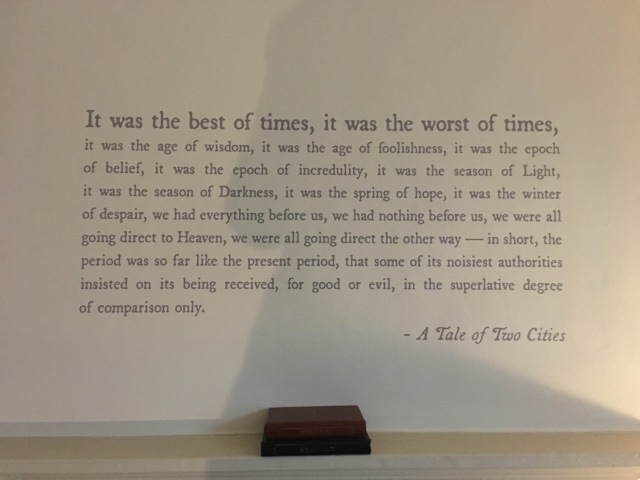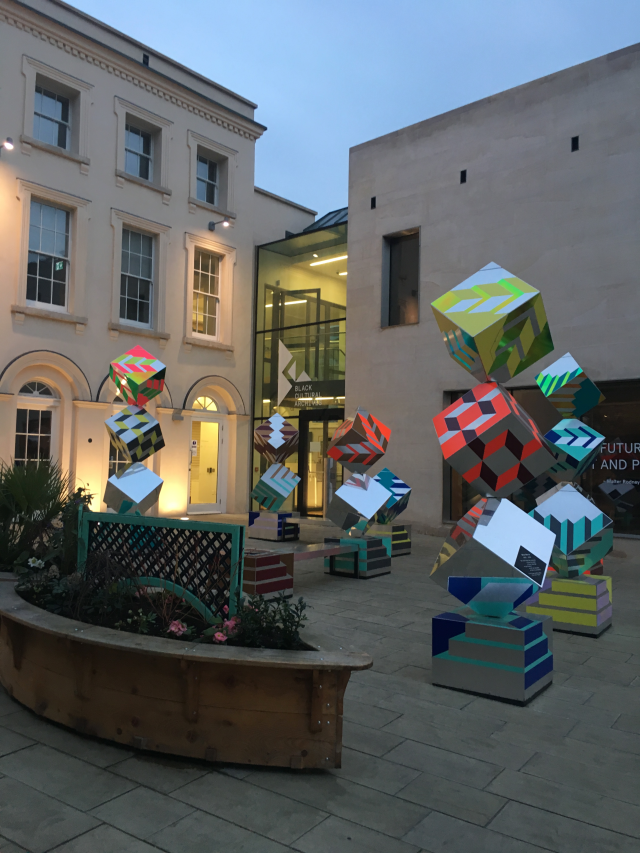Much more than any tour previously, our tour with Kim was the most relevant to our study of the selected novels this semester, especially Oliver Twist and Dickens in general. Kim was familiar with the texts more than any other guide we had, and effectively connected the sites she showed us to specific scenes in Oliver Twist. While she did dabble in some specifics, I think the best quality of the tour was Kim’s ability to paint such a vivid scene of what life was like in the area around Borough Market during the Victorian era. The levels of poverty during that time were so extreme, by “modern” standards, they’re unfathomable. Though the area itself was different, the conditions which Kim described bore such strong resemblance to that of the Old Nickel, the Gutter, Jago.
We learned about the Mudlarks, who were small, young children who would wait for the tide of the Thames to ebb, and then they would scavenge the mud banks of the riverside in the hopes of finding anything worth even the tiniest bit of money, so that they could contribute to their family’s income. However, because most of these children were so small and did not know how to swim, drowning deaths were incredibly common. Because of the poverty of the area, no one could really afford to bury a child, especially because infant and child mortality was so high, so the family of the deceased child would retain the body, and once an adult died, the child would be buried with that adult. While the gravity of the situation was certainly shocking, I find myself thinking back to Great Expectations, when Pip helps Magwitch at the end. I can’t help but wonder if Pip hadn’t taken him in, is this the sort of life which he would have lived? Granted, Magwitch was a criminal, a violent one at that, but the question which then arises comes down to morality: How can we judge who is deserving of help? Do we believe that these types of situations are fate, or some kind of otherworldly or godly intervention of punishment and consequence?
There is a strong question of morality throughout the Victorian period, and something Kim said put this best. This was a “broken population.” Regardless of any kinds of religious bearings or anything along those lines, everything these people did was a matter of survival. People engaged in deplorable activities not because they sought some kind of adrenaline rush or thrill, but because as far as they knew, they had no other options, and this was the only way that they would survive. Dickens illustrates this in his portrayal of Fagin in Oliver Twist. Fagin is quite plainly stereotypically evil for his teaching young boys to be criminals, but Fagin does help Oliver a lot throughout the novel. Dickens has a habit of writing novels which are at minimum somewhat autobiographical, and Oliver Twist is no exception. Arguably the most traumatic period of Dickens’s life was when he worked in a shoe-blacking factory while his family was incarcerated at the debtors’ prison. While working at the shoe-blacking factory, Dickens was often mistreated by the other boys working there, until one day, a young man there helped him, and his name was Bob Fagin. This anecdote alone convinces me that there are more layers to Fagin than his criminal life. Though he encourages Oliver and the other boys into treacherous habits, he still looks after them very much so, because once again, survival is the top priority at this point.











